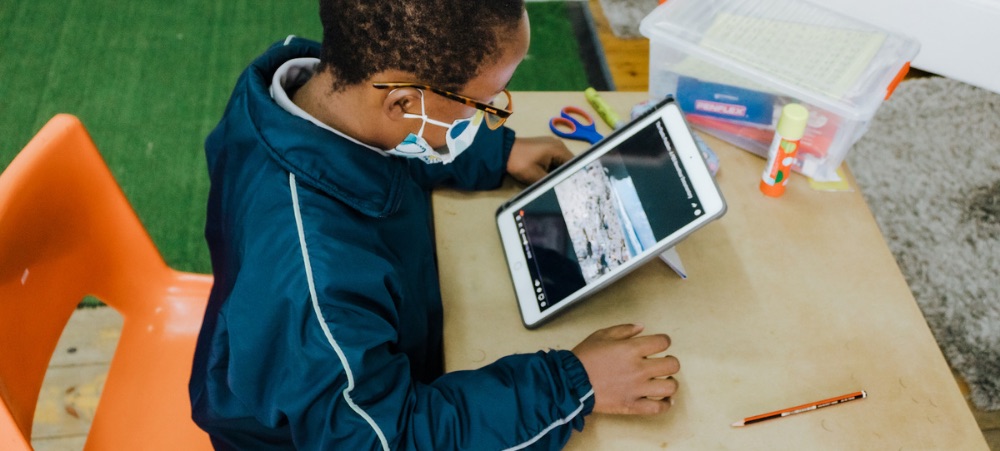
JUNIOR HIGH ROADMAP: TAKE THE LONG VIEW BUT MAKE EVERY DAY COUNT
High school is an exciting if sometimes scary and demanding stage of a young person’s life, and it requires of them to balance a daily focus on learning and academic work while also continuously considering their future and where they are headed. These competing considerations – the focus on now while also not losing sight of tomorrow – can cause uncertainty and anxiety, but using a framework on the way can have a significant impact on creating peace of mind and successful outcomes, says Dr Gillian Mooney, Dean: Academic Development and Support at The Independent Institute of Education, SA’s largest and most accredited private higher education provider. “By getting into the right frame of mind, and armed with a daily plan of action, you can incrementally build your way towards great results in Matric, and opportunities that align with your vision thereafter,” she says. “What Covid has made clear, is that we need to use every day to our advantage. Small wins compound, but if you procrastinate, you might just find yourself in an impossible position down the line.” Dr Mooney says junior high school students should strategise for the long game, and combine that with short-term action plans so that they are able to start senior high in as strong a position as possible, by doing the following: KEEP ON TOP OF THINGS EVERY DAY “Make sure that you master the work done in class every day. Do your homework to the best of your ability, and if there are concepts you don’t understand, ask for help and assistance until you do. Don’t push things to the side and think you are going to deal with them later, because later you may just have too many things to deal with and then you’ll start feeling overwhelmed. “By doing a little bit every day to cement new knowledge, you are building a strong foundation for the future, and your learning muscles and confidence are strengthened.” DON’T GO OFF THE RAILS – ASK FOR HELP High school comes with a host of firsts – good ones and not so good ones, notes Dr Mooney. “You’ll be faced with exciting new opportunities but also temptations. Don’t lose sight of what you are building towards, and always consider how your choices will impact on your future. Your freedom will be increasing, but so will your responsibilities. Make wise choices and enjoy your journey towards adulthood, while also being careful not to make choices that can turn into hurdles down the line. In particular, be extremely circumspect where social media is concerned as small missteps can have huge consequences. “If you find yourself struggling – academically, mentally, emotionally, physically – know that there are many avenues you can turn to for help. There could be trusted adults in the community, teachers, organisations and even online resources to which you can turn. Don’t despair if you are finding yourself in a difficult spot. There are support and resources available, so keep looking for help until you find it.” CONSTANTLY EVALUATE WHERE YOU ARE HEADED You may have an idea of what you want to do when you Matriculate, or you may not. Whichever it is, junior high school provides the opportunity for you to consider your options while you still have plenty of time. “Keep in mind that you will need to make subject choices in Grade Nine, which will impact greatly on your options after you finish school,” says Dr Mooney. So as you progress through the days, weeks and months of junior high, consider where your strengths lie, and how these might match up to a future career. “This is why it is important to not leave your investigation of your future studies until Matric, because by then you may have dropped the subjects you would have needed to apply for your qualification of choice. If you think you are terrible at Maths and want to drop it as soon as you are able to, consider which careers you will be ruling out if you do so. “If you don’t know the answer to that, it is worth finding out by for instance doing online research, or speaking to student advisors at higher education institutions about fields that interest you, and what the entry requirements for those would be.” START TO BROADEN YOUR HORIZONS The world is evolving rapidly and by the time junior high learners matriculate, it will look completely different from the way it looks today. In junior high, young people should start developing themselves holistically, and start learning about things outside of their current field of experience and frame of reference. For instance, they can start keeping up with the daily news so that they know what’s going on in the country and the rest of the world. They could also start cultivating a hobby to develop their creative side and ensure they get regular exercise through group or individual sport. “You are now at the stage of your life where you are starting to develop into the adult you will become. As the saying goes – with some creative licence taken here – there are things we know, things we don’t know, and then things we don’t know we don’t know. Your school will be teaching you about the things you don’t know, but it is your responsibility to be curious about the world and start finding out about the things you didn’t even know you didn’t know. “You may find that there is a whole world of opportunities that get you excited in terms of your future, that you were never exposed to before. So every day, do your best to ensure you continue to grow academically, while also firmly considering where you are headed by researching where the world is moving and where your future opportunity might lie.”



































